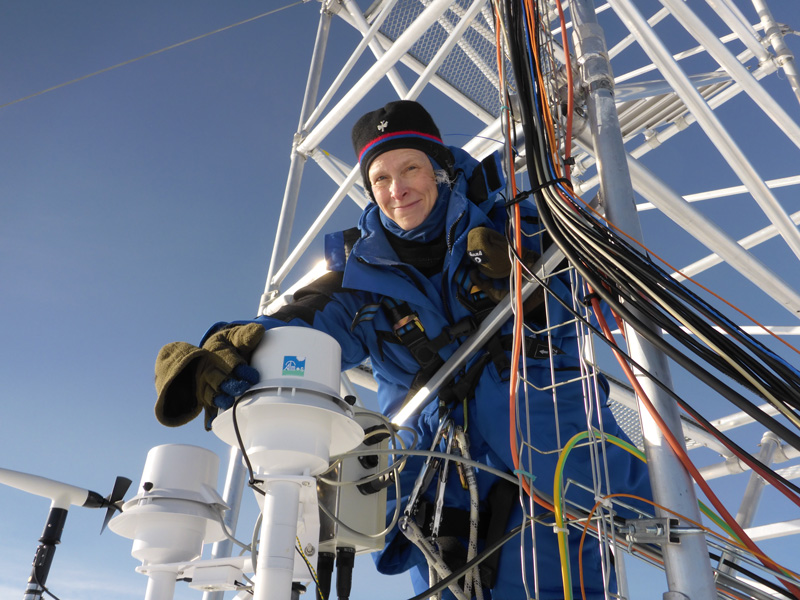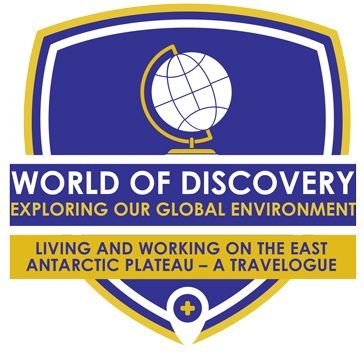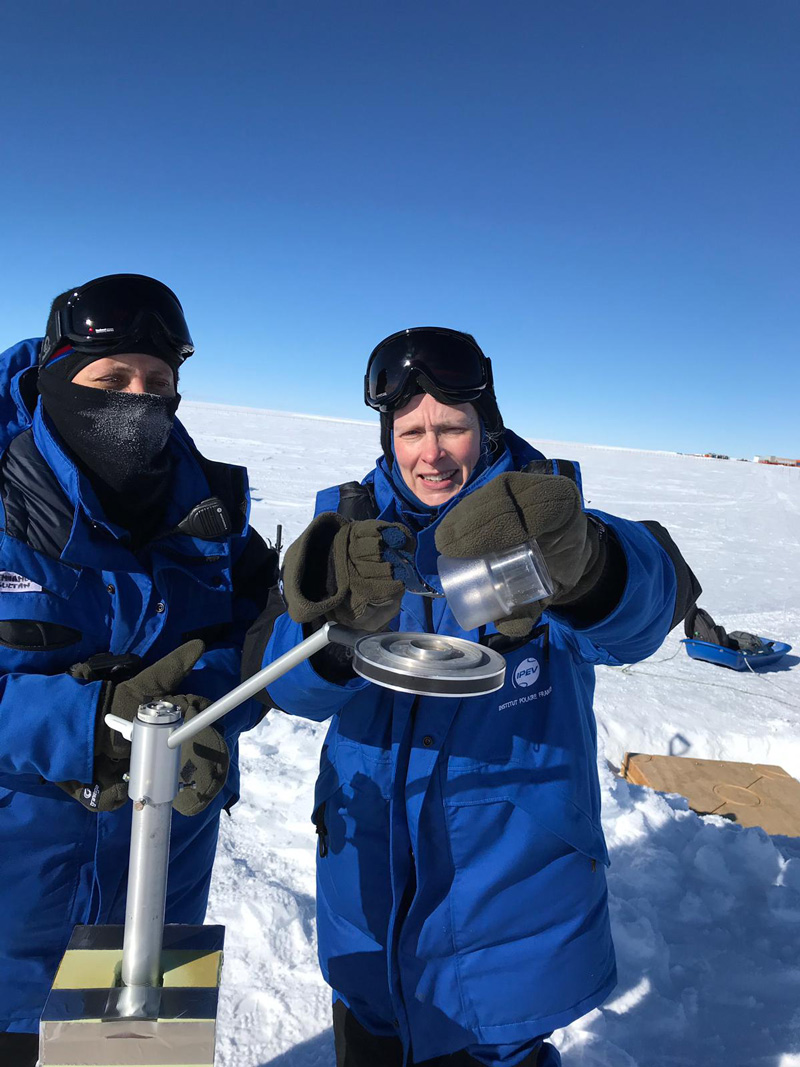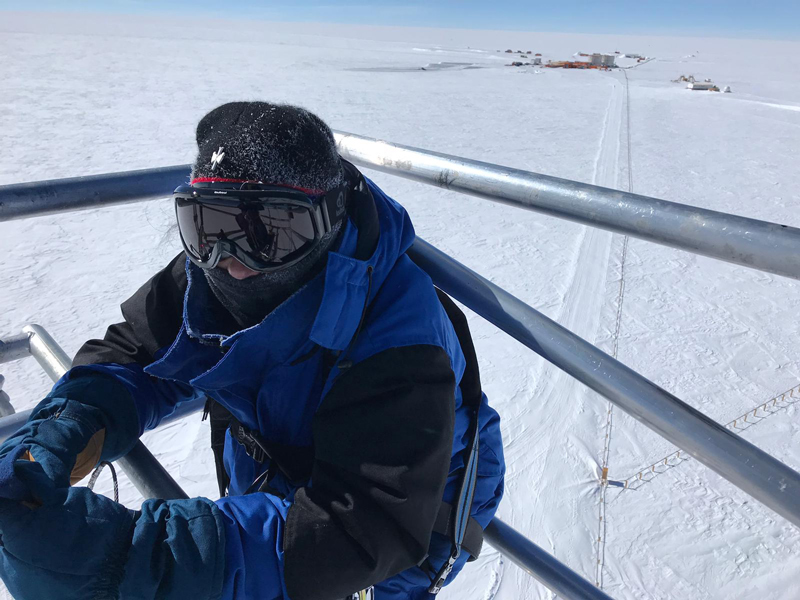


Clouds of Antarctica
Photos courtesy of Dana Veron September 25, 2019
UD’s Dana Veron reflects on conducting research in Antarctica
During her first year of graduate school, University of Delaware Geography Professor Dana Veron read Antarctica by Kim Stanley Robinson. Soon after, her book club chose a book highlighting Ernest Shackleton’s voyage to Antarctica in 1914. Her interest was piqued, and Veron decided that, one day, she would find a way to travel to Antarctica.
Veron completed her second visit to one of the most remote corners of the earth this past winter, and she will describe her experiences in Antarctica in a travelogue talk at the Delaware Museum of Natural History on Thursday, Oct. 3 at 7 p.m. Veron’s talk will launch a new lecture series, World of Discovery — Exploring Our Global Environment, offered by the museum and UD’s College of Earth, Ocean and Environment. More information and registration for Veron’s talk is available at the museum’s website.

Veron said that in addition to her curiosity beginning through her book club, she also wanted to study in Antarctica because she is interested in problems related to clouds in climate models in situations that are difficult to model.
“I’m particularly interested when the changes that happen in the clouds happen at a scale that the model cannot resolve and how can we use statistics and other physical features of the atmosphere to help predict when these small-scale variations are important to our predictions,” said Veron. “When I found out you could look at complex cloud issues in a place I have always wanted to go, I was really excited about getting involved with the project.”
Project Calva
Veron’s first excursion to Antarctica took place in 2017 with a French-led initiative known as CALVA, an international collaboration of climate researchers working to improve calibration and validation of satellite observations and climate modeling in Antarctica. Such modeling is essential for the safety of researchers and support staff on the continent and contributes to scientists’ understanding of global climate change.

Veron spent half of that first trip conducting research on the Eastern Antarctic Plateau at a location known as Dome C and the other half at the coastal base of Dumont d’Urville working to install and calibrate a Light Detection and Ranging (LIDAR) instrument to measure clouds and snowfall.
The observations collected by LIDAR and from her research are a critical component in studying the climatology of the region. As for any location, a longer time-series of data — ideally up to 30 years-worth — allows researchers more confidence to predict climatological states. Veron’s work builds on nine years of measurements in the region and ensures high-quality data is being collected for future research and modeling.
Because the atmosphere blows from the Dome C location to the coastal bases, modeling the atmosphere correctly at the high-altitude location is important for weather prediction as a whole.
“If you get the upstream conditions wrong, that error is going to propagate downstream to the coastal locations,” said Veron. “We want to have real good observations because we’re using the observations to validate our models.”
Critical weather predictions
Because weather and visibility can change quickly in the region, and because the environment is so unforgiving, understanding weather patterns and creating good predictive models are matters of safety in Antarctica.
Much of the movement of materials and people happens either by helicopter, small aircraft or a caravan made up of caterpillar tractors that pull containers on sledges to move goods and services.
For instance, when researchers at Dumont d’Urville on the coast want to reach Dome C, which is 1,200 kilometers away and significantly higher above sea level, they must fly. The flight can require re-fueling midway, which requires passengers to get out of the plane and stand in their warmest gear for 30 minutes to an hour with no shelter.
Even without having to travel, researchers can be at risk when working outdoors. If an intense fog rolls in while researchers are in the field, they can lose visibility and have trouble finding their way back to base.
“If you’re far enough away, you don’t see the base, and especially if fog rolls in, which it does with some frequency at Dome C, you have to know that’s happening with enough time to get back to the base,” said Veron.
Cold instruments
In addition to the challenges the weather poses to travel and logistics, the extreme cold also wreaks havoc on the scientific instruments.

For the first few years of the project, the scientists were not only taking observations but figuring out whether they were doing a good job making those observations. Most of the scientific instruments are designed to withstand temperatures around minus 25 or minus 30 degrees Celsius. When Veron was at Dome C, however, the average temperature was typically around minus 45 degrees.
“If your instrumentation is not operating well, for example, if it’s ice covered, you’re not going to measure the temperature of the atmosphere, you’re going to measure the temperature of the ice,” said Veron.
Now, several years into the project and having adjusted the instruments and made modifications, Veron is confident that the research group has the right tools in place for observing the atmospheric state in these extreme conditions.
A rich environment
Veron said that this past year was a particularly fortuitous time to study in Antarctica because it was the Year of Polar Prediction and there was a particularly high concentration of scientists in Antarctica studying topics similar to her own.
“Even when I wasn’t out in the field working on instrumentation, I had a very rich environment to come back to,” said Veron. “It’s a very communal space when you’re at a small base like that, so we had lots of time to talk about scientific issues and work out some ways to do a better job of studying these complicated problems.”
Contact Us
Have a UDaily story idea?
Contact us at ocm@udel.edu
Members of the press
Contact us at 302-831-NEWS or visit the Media Relations website

